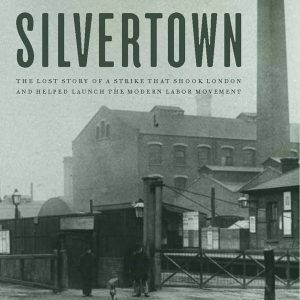John Tully’s history of the Silvertown strike reveals industrial and imperial connections, and the nature of the worker’s struggle against them at a crucial period, argues John Westmoreland
John Tully, Silvertown: The Lost Story Of A Strike That Shook London And Helped Launch The Modern Labour Movement (Lawrence & Wishart, 2014), 267pp [published in the U.S. by Monthly Review Press]
John Tully has done much more than write a book about a strike in this fascinating volume. He has managed to recreate a pivotal moment in British Labour history, reveal the connections between imperialism and industry, and the inherent barbarity of capitalism, and analyse the response of the British Labour movement.
The Silvertown strike took place at the works founded by Samuel Winkworth Silver in 1852. Originally the works made rain-proof clothing using rubber, but by 1889 it was the centre of one of the most important high-tech industries in Britain…
Tully’s account is very readable. He is able to connect the features of the strike to the wider historical period and uses quotations from great thinkers such as Marx to explain the barbarity of the system and the actions of its participants. He rescues from obscurity the working-class fighters who made their mark, such as the strike leader Fred Ling whose energy and willingness to learn inspired Eleanor Marx; and the landlady of the Railway Tavern, Mrs Cundy, who let the pub be used as a strike HQ. Tully does an excellent job of introducing the reader unfamiliar with the history of the East End to the workers’ leaders: Tom Mann, Will Thorne, and especially to Eleanor Marx…

Comments are closed.